 |
|
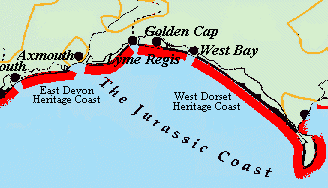 |
|
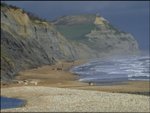 The cliffs of West Dorset are formed from rocks of Lower Jurassic age and are capped by younger sandstone of Cretaceous age that give Golden Cap its cap. |
|
 |
|
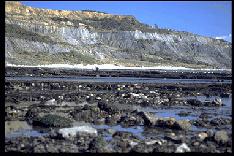 The clay cliffs either side of Lyme Regis are formed from rocks of the Lower Jurassic age and are some 200 million years old. During the formation of the world, Lyme has been a desert as well as being deep under the sea. |
|
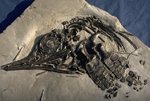 A new species of Ichthyosaur found below Golden Cap in 1995. Despite over two hundred years of collecting, remains new to science continue to be discovered each year. |
|
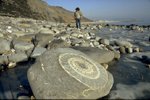 Giant ammonites can be found on Monmouth Beach, just west of Lyme. They are far too large to extract and attempts to do so only lead to damage. They are best left where they are for all to enjoy and photograph. |
 The rocks around Lyme Regis and Charmouth are famous for fossilised remains such as this beautiful fish that lived in a tropical sea that once covered the area in the early Jurassic period. |
If you do
want to try your luck at collecting, there are some very important
points to bear in mind. The best and safest time to collect is when
the tide is going out. The tide floods the beach just east of Lyme
shortly after low tide so always aim to pass this point around low
tide. The cliffs are dangerous and prone to cliff falls at any time
while the landslides contain treacherous mudflows so stay well
clear. Anyway, the very best place to look is on the beach below the
landslides. Monmouth Beach, just west of the famous harbour, the
Cobb, contains huge ammonites. They are impossible to collect but if
you cannot find any fossils elsewhere, at least you can take a
picture of some home to show your friends. If you are still
desperate to find fossils, come back in the depths of winter! 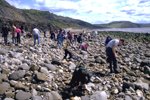 The beaches around Lyme Regis are the best and safest places to search for fossils; the cliffs are not safe. |
|
|
Dinosaurland contains a large number of local specimens; the Philpot
Museum has fossils and information about Mary Anning. Charmouth Heritage Coast Centre is very much a 'hands on' visitor centre with specimens, interactive displays and the 'Jurassic Theatre' with its audio-visual programme. The centre also manages a fossil collecting code of conduct and web site record of recent important discoveries. Several Fossil shops are to be found in Lyme and Charmouth. They contain both local fossils and geological specimens from around the world. |
|